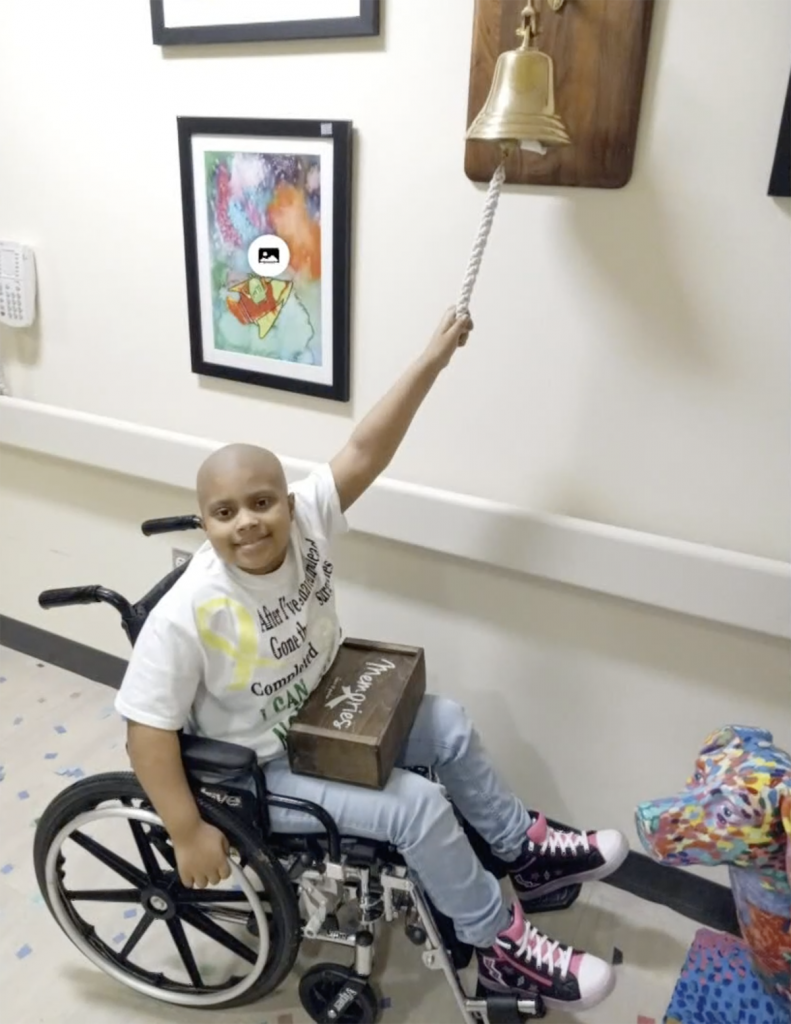What Kind of Cancer is Sarcoma?
- A 7-year-old girl from Reidsville, N.C., who was diagnosed with osteosarcoma last summer, is officially cancer-free and recently rang the bell.
- Sarcomas are cancers that arise from the cells that hold the body together. They can occur in muscles, nerves, bones, fat, tendons, cartilage or other forms of connective tissues.
- There are hundreds of different kinds of sarcomas, which come from different kinds of cells. The word sarcoma refers to a large array of bone and soft tissue cancers.
Leigha Davenport rang the bell about two weeks ago, on March 1 the day she finished chemotherapy treatments for her rare bone cancer.
Read More
"She kept saying, 'Well, my leg kind of hurts,' but we didn't notice anything physical," Millinda said.
Millinda took Leigha to the doctor, but was told her daughter's leg pain was likely just growing pains. But, another doctor visit revealed the family's worst fear: Leigha had cancer osteosarcoma.
Leigha began treatment shortly after her diagnosis; she underwent 35 rounds of chemotherapy, which ended on March 1. And one week later, on March 7, she was officially declared cancer-free.
While hearing those words is a wonderful feeling, the road to recovery won't be easy.

"She'll be in a wheelchair for the rest of the year, but as far as muscle movements and tendons and everything, we do little stretches and exercises you know just to keep the leg active without putting in pressure," Travanti said.
"(We're) just trying to get her back to her normal self, hopping and jump roping and all that good stuff," he added.
For the next five years, Leigha will visit her doctor every three months to ensure her cancer hasn't come back.
From everyone here at SurvivorNet: Congratulations, Leigha!
Osteosarcoma: What Kind of Cancer is Sarcoma?
Sarcomas are cancers that arise from the cells that hold the body together. They can occur in muscles, nerves, bones, fat, tendons, cartilage or other forms of connective tissues.
"There are hundreds of different kinds of sarcomas, which come from different kinds of cells," Dr. George Demetri, director of the Sarcoma and Bone Oncology Center at Dana-Farber Cancer Institute and Harvard Medical School, previously told SurvivorNet.
Related Video: Sarcoma survivor Kara Ladd finds solace in reiki, meditation and energy healing during her cancer treatment.
The word sarcoma refers to a large array of bone and soft tissue cancers. Those are then further broken down into more specific forms of the disease, including:
- Ewing's sarcoma Cancer that typically occurs in and around the bones, often in the arms or legs, or the bones of the pelvis. It most commonly occurs in children and young adults.
- Kaposi sarcoma Rare type of cancer that causes lesions on the skin, in lymph nodes, organs and the mucous membranes of the mouth, nose, and throat. It typically affects people with compromised immune systems, such as those with HIV.
- Epithelioid sarcoma Soft tissue cancer that grows slowly. It's likely to begin under the skin of areas like the finger, hand, forearm, lower part of the leg or foot.
- Synovial sarcoma Known also as a malignant synovioma, this is a cancer that can form soft tissues such as muscle or ligaments, commonly close to joints or in areas like the arm, leg or foot.
- Osteogenic sarcoma Known also as osteosarcoma, this cancer forms in the bone and is most common in young children.
- Spindle cell sarcoma Rare form of the disease that accounts for less than 2% of all primary bone cancer cases. It's most common in adults over age 40 and often forms in the bones of the arms, legs and pelvis.
- Angiosarcoma This cancer appears in the lining of the blood vessels.
- Liposarcoma This cancer develops from fat cells and often occurs in the torso, limbs or deep within the abdominal lining.
- Chondrosarcoma This cancer occurs in the cells of the cartilage, mostly in adults over the age of 40.
Related: Bold, Bald & Beautiful: Kara Ladd Met a New Version of Herself After Her Cancer Diagnosis
"Unfortunately, most sarcomas don't cause many of the symptoms that may be associated with other cancers," Dr. Dale Shepard, director of the Cleveland Clinic Taussig Cancer Institute Phase I and Sarcoma Programs, previously told SurvivorNet. Shepard also explained that this often leads to large tumors at the time of diagnosis.
"Soft tissue sarcomas are typically painless," he added. "Bone sarcomas may be mistaken for orthopedic injuries. A mass the size of a golf ball or larger and growing should be evaluated as a potential sarcoma. It's important that patients who do have symptoms are not dismissive of them."
Learn more about SurvivorNet's rigorous medical review process.

